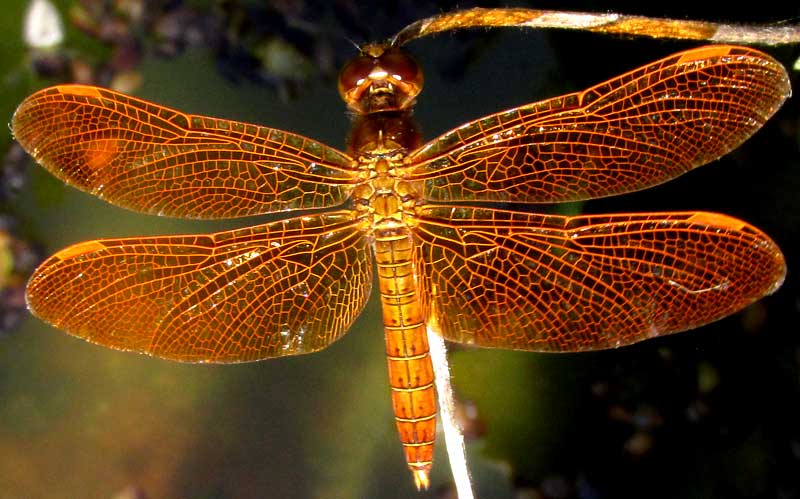Excerpts from Jim Conrad's
Naturalist Newsletter
from the June 28, 2018 Newsletter issued from Rancho Regenesis in the woods ±4kms west of Ek Balam Ruins; elevation ~40m (~130 ft), N~20.876°, W~88.170°; central Yucatán, MÉXICO
SLOUGH AMBERWINGS GALORE
Above the waters of the rancho's cement-lined pond three dragonfly species normally can be seen, by far the most numerous being the Slough Amberwing, PERITHEMIS DOMITIA, portrayed below:

Slough Amberwings are distributed from Mexico and the Caribbean south through Central America into northern South America. Not much life-history information is available about them, but I can report that they do what dragonflies are famous for doing, which is to streak about above water, grabbing flying insects with their front legs, and returning to things sticking out of the water, and feeding. Also among all the flitters there's a great deal of checking out one another, all done so fast that I can't say what's going on. They must do what they do very well, though, to be so numerous.
One admirable feature about amberwings in general is that as a group they're so easy to identify, with their amber-colored wings and tendency to be smaller than other dragonflies. Knowing that you have an amberwing, it's easy to check on what amberwing species are listed for your area, then compare the species. In dragonfly identification mostly you focus on the intricate network of veins in the wings. The veins form borders of "cells," and cell shape, size, presence or absence tells us which species we have.
Lists on the Internet indicate that in the Yucatan we might expect two amberwing species. Pictures show that the wings of one species are broader than the other, so here we don't even have to consult wing venation. Our Slough Amberwing is the narrow-winged one.
We don't have sloughs here, but that's the way with common names.